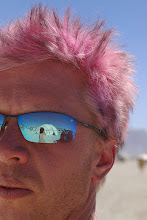In this appliance there are a bunch of files. Lots of these are normal Linuxy files, many are from VMware.
The Studio VA itself is Ubuntu Feisty, 32bit. Almost all of the VMware bits reside in /opt/vmware/.
The easiest way to explain what files live where is to walk through an appliance build from scratch using the web interface.
Login to the VMware Studio GUI, http://whateverIP/ 
Click the Create Appliance button near the right side of the screen, select your base OS and specify a name for the appliance:
The list of base operating systems is generated by the XML files found in the directory:
/opt/vmware/etc/build/templates/
You'll notice an extra OS in the screenshot above, CentOS 5.2 x86_64. I added that by copying the file /opt/vmware/etc/build/templates/centos/5/2/build_profile.xml and making a few tweaks to it--those tweaks are another post in themselves.
Using the web GUI, type in your appliance name, version, description, etc. Keep clicking Next at the bottom of the screen to progress through the wizard. The only important thing here is that you have a VMware Server v1.something installed and accessible for the last step. 
Click Save and Build to ensure this new profile and your build environment settings are working. If you have issues please rtfm else respond to this post and we can figure it out.
At this point you should have a completed build from the web GUI. Great stuff. What has happened under the hood is that the reference profile template was used to create a new appliance profile XML file in the directory /opt/vmware/var/lib/build/profiles/. The file in this directory should have a familiar name to it.
From now on you're ready to build from the command line. Run the command:
studiocli -cvp /opt/vmware/var/lib/build/profiles/myAppliance.xml
...And there you go. Nice. Debug-level verbosity is had with a second -v argument, as in:
studiocli -cvvp /opt/vmware/var/lib/build/profiles/myAppliance.xml
At this point you no longer need to use the web GUI to make changes to the appliance profile XML file. That file looks much like an OVF file with a few VMware Studio enhanced sections.
Nifty eh?
